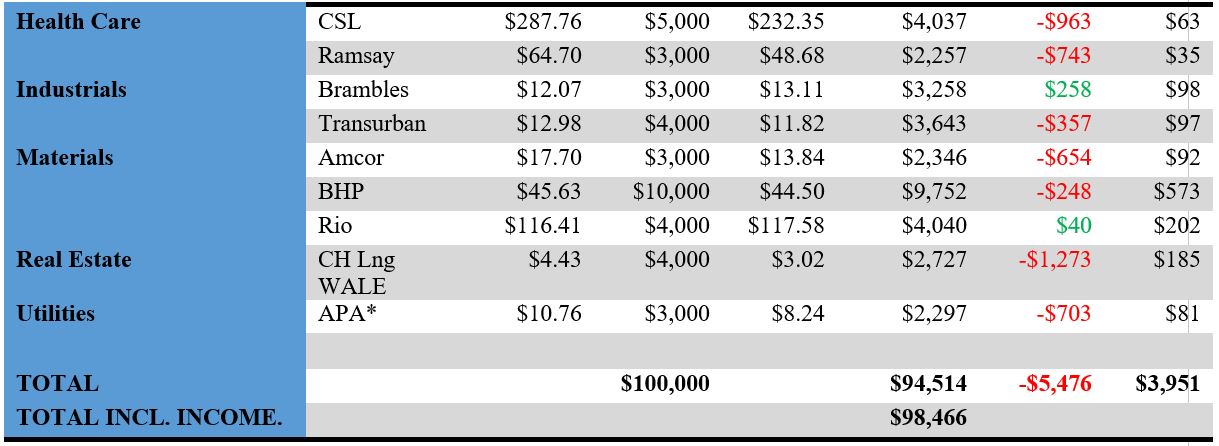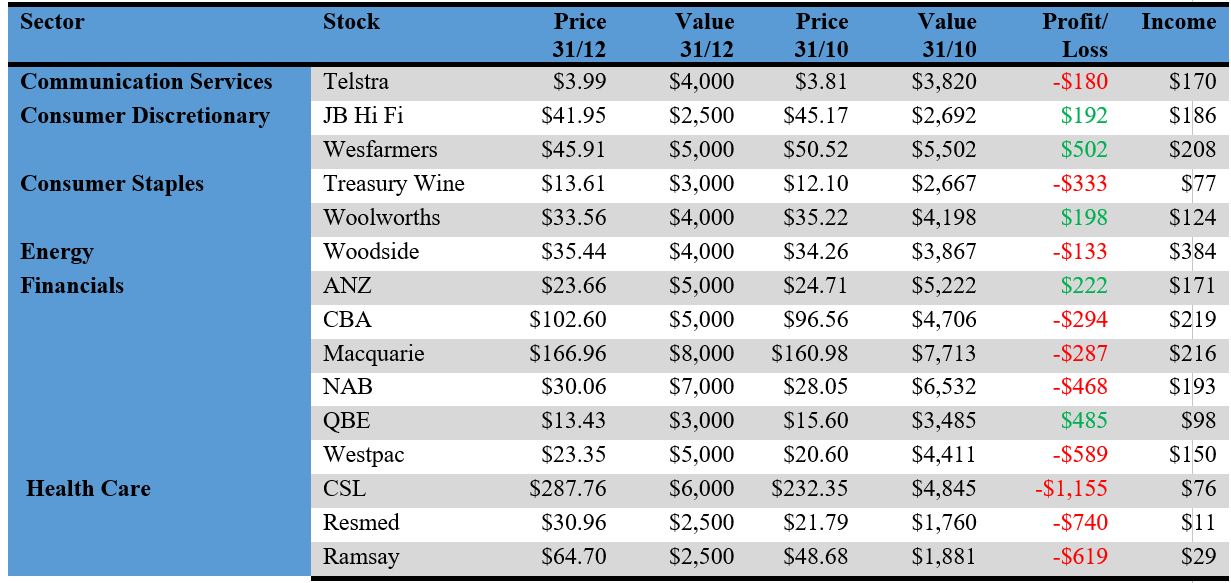A second consecutive down month has put the ASX into negative territory for calendar year 2023. In price terms, it has lost 3.7%, and when dividends are included, the loss drops to 0.2%. In a soft market, our model portfolios outperformed in October. Year to date, the growth portfolio continues to outperform the benchmark index, while the income portfolio, with an overweight position in financial stocks and no exposure to technology stocks, is lagging the benchmark.
There are two model portfolios – an income-oriented portfolio and a growth portfolio.The objectives, methodology, construction rules and underlying economic assumptions can be referenced here: (see: https://switzerreport.com.au/our-portfolios-for-2023/
These are long-only model portfolios, and as such, they are assumed to be fully invested at all times. They are not “actively managed”, although adjustments are made from time to time.In this article, we look at how they have performed so far in 2023. To do so, we will start by examining how the overall market has fared.
Technology and energy lead, real estate and health care lag
The tables below show the performances in October and for the calendar year of the components and industry sectors that make up the Australian share market.
In October, the “top 20” stocks modestly outperformed the broader market losing 2.7% compared to the index loss of 3.8%. Small caps continued to perform relatively poorly, losing 5.5% in the month. The midcap 50 index, which tracks the performance of stocks ranked 51st to 100th by market capitalization size, suffered a loss of 6.9% and now lags the broader market by a little over 4.0%.

With the industry sectors, information technology is the standout sector. Following the lead from the USA, the sector posted a gain of 14.0%. In October, however, it was the worst performing sector with a loss of 7.6%.
The tiny utilities sector was the only sector to record a positive return in October of 1.7%. For the calendar year, it has returned 7.1%.
The largest sector, financials, lost 3.6% in October. Making up 28.8% by weighting of the broader S&P/ASX 200 index, the sector has lost 0.9% in 2023, underperforming the overall market by 0.7%. The second largest sector, materials, which includes the big miners such as BHP and Rio, fared comparatively better and is enjoying a small positive return for the year of 1.7%.
Consumer discretionary is perhaps the “surprise” sector of the year, given the negative commentary about consumers being stretched and higher interest rates taking their toll on consumer spending. Year to date, it is up by 9.8%.
Weighed down by declines in the share prices of CSL, Resmed and Ramsay, the health care sector lost 7.2% in October. Year to date, it is the worst performing sector with a return of -14.9%. Real estate is the second worst performing with a total return of -5.8%.


Portfolio performance in 2023
The income portfolio to 31 October has returned -1.53% and the growth-oriented portfolio has returned 1.92% (see tables at the end). Compared to the benchmark S&P/ASX 200 Accumulation Index (which adds back income from dividends), the income portfolio has underperformed by 1.32% and the growth portfolio has outperformed by 2.13%.

Income portfolio
The objective of the income portfolio is to deliver tax advantaged income whilst broadly tracking the S&P/ASX 200.
The income portfolio was forecast to deliver an income return of 5.0% (based on its opening value at the start of the year), franked to 80.3%. With dividends declared during the February and August reporting seasons, it is on track to marginally exceed this. Year to date (ten months to end October), the income return is 3.95% franked to 82.5%.
In the month of October, the income portfolio lost 2.84%. Reflecting its defensive mix, it outperformed the benchmark index by almost 1%. For the year, it has returned -1.53%, which is 1.32% behind the index.
The portfolio is moderately overweight financial stocks and underweight the more growth-oriented sectors such as information technology and health care. In a strong bull market, the income portfolio will typically lag the market, and in a bear market, it is likely to outperform.
No changes to the portfolio are proposed at this point in time.
The income-biased portfolio per $100,000 invested (using prices as at the close of business on 31 October 2023) is as follows:


* Portfolio unable to participate in APA capital raising at $8.50 per share
Growth portfolio
The objective of the growth portfolio is to outperform the S&P/ASX 200 market over the medium term, whilst closely tracking the index.
In October, the growth portfolio returned -3.16%, outperforming (on a relative basis) the benchmark index by 0.62%. An overweight position in healthcare was a major contributor to the negative return. Year to date, it has returned 1.92%, outperforming the benchmark by 2.13%. (Note: performance does not include potential participation in NextDC 1:8 non renounceable entitlement issue at $10.80 per share).
The portfolio is moderately overweight financials, health care and information technology. It is moderately underweight industrials, real estate and utilities. Overall, the sector biases are not strong.
No changes are proposed to the portfolio at this point in time.
Our growth-oriented portfolio per $100,000 invested (using prices as at the close of business on 31 October 2023) is as follows:


* Performance does not include participation in 1:8 non-renounceable issue at $10.80 per share
Important: This content has been prepared without taking account of the objectives, financial situation or needs of any particular individual. It does not constitute formal advice. Consider the appropriateness of the information in regards to your circumstances.

